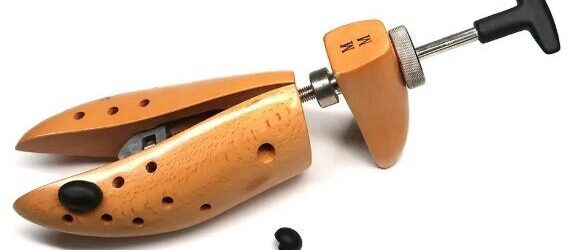
Shoe stretchers might not be the first tool that comes to mind when thinking about footwear maintenance, but for anyone who’s experienced tight, pinching shoes, they’re an absolute game changer. These handy devices are designed to gently and effectively expand your shoes, improving comfort, extending the life of your footwear, and even helping avoid foot problems. In this essay, we’ll break down what shoe stretchers are, how they work, when to use them, and the different types available.
What Are Shoe Stretchers?
A shoe stretcher is a tool that mimics the shape of a foot and is inserted into a shoe to gradually stretch it. Traditionally made of wood or hard plastic with adjustable mechanisms, shoe stretchers allow users to target specific areas of tightness. They are most often used to make shoes slightly longer or wider, or to relieve pressure on problem spots like bunions, corns, or hammertoes.
Why Use Shoe Stretchers?
-
Comfort Enhancement
The number one reason people use shoe stretchers is comfort. A pair of shoes that fits too tightly can cause blisters, calluses, and long-term foot issues. Stretchers offer a non-destructive solution to this problem. You can even use spot stretchers to expand just one part of the shoe, like the toe box or heel. -
Breaking in New Shoes
New shoes, especially leather ones, can be stiff. Rather than suffering through painful break-in periods, a shoe stretcher can speed up the process and mold the shoe gently to the shape of your foot. -
Accommodating Foot Conditions
For people with foot conditions like bunions or plantar fasciitis, shoe stretchers help create extra space exactly where needed. Some models come with special attachments that push out specific areas to relieve pressure. -
Preserving Shoe Shape
In addition to stretching, these tools also help maintain the shape of your shoes over time, especially if they’re stored for long periods. This is especially valuable for high-end or delicate shoes.
Types of Shoe Stretchers
There are several kinds of stretchers tailored for different purposes:
-
One-Way Stretchers: Adjust either length or width, not both. Ideal if you only need a slight change.
-
Two-Way Stretchers: Expand both length and width. These are more versatile and common.
-
High-Instep Stretchers: For people with high arches who need more vertical space.
-
Boot Stretchers: Designed for taller footwear like boots, with long handles for deeper reach.
-
Ball-and-Ring Stretchers: Specifically target localized tight spots like bunions.
Each type often comes with plug-in spots or pressure pads to stretch specific problem areas, which is super helpful if you only need adjustments in particular places.
How to Use a Shoe Stretcher
Using a shoe stretcher is straightforward:
-
Insert the stretcher into your shoe.
-
Adjust it using the turning handle or dial, depending on whether you’re stretching width, length, or both.
-
Leave it in place for 6–24 hours. For stubborn shoes or leather, using a shoe stretch spray beforehand can soften the material and improve results.
-
Test the shoe. If it still feels tight, repeat the process as needed.
Patience is key—don’t overdo it all at once, or you risk damaging the shoe.
Limitations and Considerations
-
Material Matters: Stretchers work best on natural materials like leather and suede. Synthetics or rubber-based shoes are less responsive.
-
Size Limitations: You can stretch a shoe up to half a size, but trying to go beyond that can distort the structure.
-
Cost: Quality shoe stretchers aren’t expensive, but if you only need them once, you might want to consider going to a cobbler instead.
Conclusion
Shoe stretchers are an underrated but highly useful tool for anyone who values both comfort and footwear care. Whether you’re breaking in a new pair of leather shoes, relieving pressure from a bunion, or just want your favorite heels to stop pinching, a shoe stretcher can provide a simple, non-invasive solution. While they won’t work miracles, their thoughtful use can genuinely transform how your shoes feel and fit.
